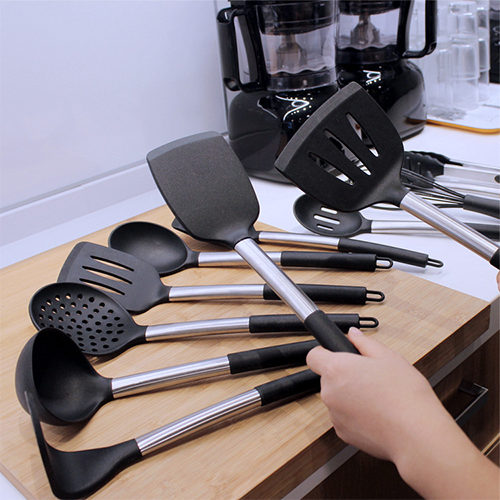 English
English-
 English
English -
 Español
Español -
 Português
Português -
 русский
русский -
 français
français -
 日本語
日本語 -
 Deutsch
Deutsch -
 Tiếng Việt
Tiếng Việt -
 Italiano
Italiano -
 Nederlands
Nederlands -
 ไทย
ไทย -
 Polski
Polski -
 한국어
한국어 -
 Svenska
Svenska -
 magyar
magyar -
 Malay
Malay -
 বাংলা
বাংলা -
 Dansk
Dansk -
 Suomi
Suomi -
 हिन्दी
हिन्दी -
 Pilipino
Pilipino -
 Türk
Türk -
 Gaeilge
Gaeilge -
 عربى
عربى -
 Indonesia
Indonesia -
 norsk
norsk -
 اردو
اردو -
 čeština
čeština -
 Ελληνικά
Ελληνικά -
 Українська
Українська -
 Javanese
Javanese -
 فارسی
فارسی -
 தமிழ்
தமிழ் -
 తెలుగు
తెలుగు -
 नेपाली
नेपाली -
 Burmese
Burmese -
 български
български -
 ລາວ
ລາວ -
 Қазақ
Қазақ -
 Euskal
Euskal -
 Azərbaycan
Azərbaycan -
 slovenský
slovenský -
 Македонски
Македонски -
 Lietuvos
Lietuvos -
 Eesti Keel
Eesti Keel -
 Română
Română -
 Slovenski
Slovenski -
 मराठी
मराठी -
 Српски
Српски
The Production Process We Need To Understand For Custom Silicone Kitchen Utensils
2022-07-14
Silicone kitchen utensils have always been very popular in developed countries such as Europe and the United States, and the sales volume is also very good. Current silicone kitchen utensils are mainly divided into pure silicone kitchen utensils and silicone covered kitchen utensils. Pure silicone kitchen utensils are well understood, that is, the entire product is made of silicone materials, while silicone-covered kitchen utensils are made of hardware and silicone materials. The following is a brief introduction to the production process of hardware coated kitchen utensils by SUAN houseware - a silicone kitchen utensils manufacturer.

1. There are many types of hardware. In the process of silicone encapsulation, if the bonding is not strong, silicone is probably come off because the hardware and the adhesive cannot be bonded. Usually, bonding are including hardware and glue. The types of hardware are divided into different materials, and different compound glues and bonding processes need to be selected, such as anodization of aluminum and its alloys, and copper plating of steel. Chemical methods are required. The treated metal surface should be coated with adhesive, affixed with silicone rubber or immersed in an inert solvent in time.
2. Selection of glue and treatment agent. Glue is an important auxiliary material for hardware encapsulation. Different materials choose different glues, and silicone tableware and hardware need relatively strong liquid glue for bonding. It needs to stick to silicone and hard materials at room temperature. Although metal materials and treatment agents are important in price, if the treatment agent is applied unevenly on the hardware, it will cause local sliding and other phenomena after long-term use of silicone kitchen utensils.
3. The bonding method of the product. Different silicone tableware uses different bonding methods. Silicone kitchenware is usually divided into hot-press curing and cold-bonding process. After curing, the bonding effect is achieved. The cold bonding method is to use liquid glue to manually or mechanically bond and then statically place or dry at high temperature. Different methods are aimed at different silicone products, mainly related to the structure of the silicone product.
4. The structure and positioning of the product, the elastic effect of the bonding of silicone products has a great relationship with the structure of the product and the fixed position, so try to increase the bonding area and improve the bearing capacity of the bonded joint. In the direction of force, bonding length should not be too long, while bonding width should be increased as much as possible. Level bonding is better than right-angle bonding, and flat is better than bevel. The best bonding point need to be found when we design an utensil.

To sum up, if a merchant customizes hardware-coated kitchen utensils, if the products produced by the manufacturer are to meet the required standards, they need to choose a suitable high-quality manufacturer carefully. Because high-quality silicone product manufacturers generally use food-grade FDA or LFGB as standard silicone raw materials when making silicone kitchenware, they are refined by high-temperature vulcanization molding or encapsulation, and they are more experienced in production technology and processing.





